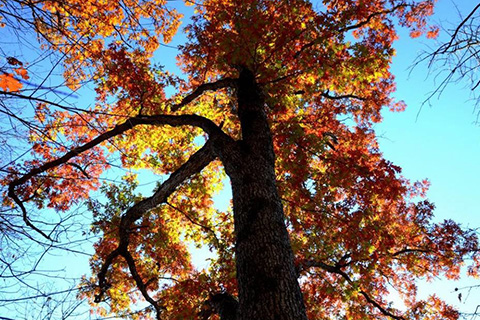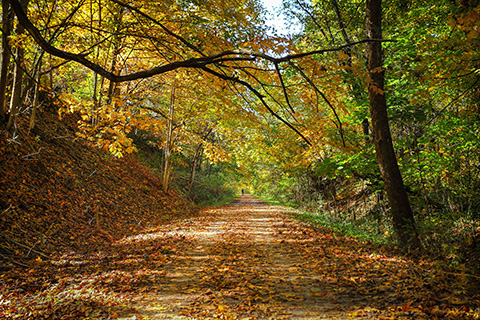With the fall season comes several favorites for Pennsylvanians, including some of the best hiking due to the arrival of crisp air and stunning fall foliage!
The cheery display of fall colors that adorn the commonwealth every year result from several key factors:
- Species diversity
- Temperate climate
- Day length
- Weather
We have a richness of fall colors because we have so many deciduous woody species -- more than 140!
Forest species diversity lends itself to variations in pigment production, which produce the array of fall colors we often enjoy. Pigments are substances within leaf tissue that absorb and reflect certain types of light. Some trees make more red-reflecting pigments (like red oaks), while others make more yellow-reflecting pigments (like poplars).
Early Changers and Seasonal Slowpokes

In general, the early changers are:
- Black gum
- Aspens
- Dogwoods
- Black walnut
- Virginia creeper vine
- Spicebush
Mid-season changers are:
- Maples
- Hickories
- Sassafras
- Black cherry
- Birches
- American hornbeam
Late-season changers:
There can be some variability to the timing of the change of colors due to microclimate influences throughout the state (for example, altitude or whether the tree is situated on a south or north facing slope.
Impacts of a Temperate Climate
Our temperate climate also plays a vital role. Pennsylvania happens to be situated in an advantageous zone, where special types of forests intermingle -- like the northern and Allegheny hardwoods (such as sugar maple, black cherry, and yellow poplar) with mixed oak and hickory communities.
Our cold winters also make it necessary for broad-leafed trees to drop their leaves -- an adaptation trees rely upon to conserve water and energy.
Producing the Colorful Show!
During the few weeks prior to leaf drop, trees undergo a series of physiological changes that conspire to create the wondrous palette of colors we see every autumn. During this process, green pigments (chlorophylls) decompose, exposing the more vibrant pigments that remain.
The gradually decreasing day length of late summer and early fall signal to trees that the time for making energy (and hence, growing) is coming to an end. Production of chlorophyll ceases and fall foliage season begins anew.
A few weeks later, warm days and cool (but not freezing) nights can snap fall foliage season into an outright show.
Are the trees around you showing signs of the coming fall? Look for those deep and vivid greens to begin fading, and perhaps a few peeks of yellow here and there in the forest, and you’ll know fall foliage season has begun!
Learn More

DCNR’s 2018 Fall Foliage Reports will be produced weekly beginning September 27 until fall foliage season comes to a close.
These reports will show you which regions are approaching, in, or past full (or peak) color. They also will include more detailed write-ups about the color change and tree activity in forest districts in each Pennsylvania region.
Find a trail to enjoy the changing leaves at the updated www.explorePAtrails.com!